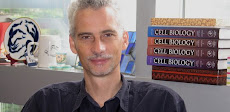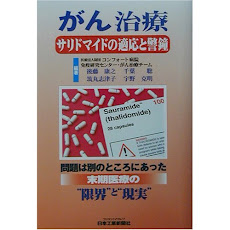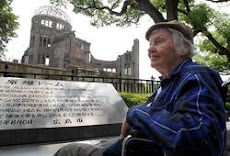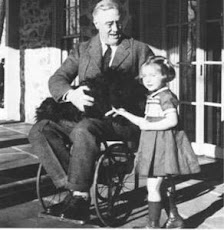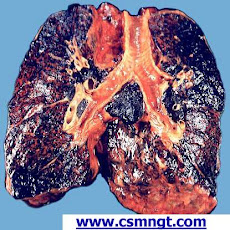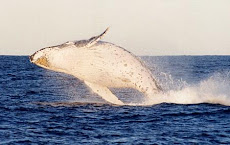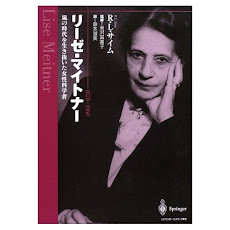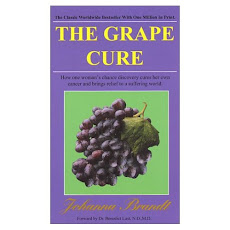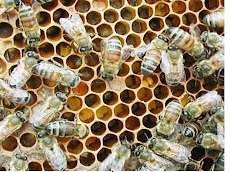Colon cancer is the "number 1" killer in Australia. The 1960 Nobel laureate
MacFarlane Burnet (1899-1985) in Melbourne, a great spiritual mentor of
mine during my university days in Tokyo, who inspired me to study the molecular biology
of immunological self-recognition, was among the numerous victims of colon
cancer. However, so far no effective therapeutic has been developed for
this formidable cancer as yet.
In 1989, a few years after his death, it was revealed that 50% of human colon cancers
carry the oncogenic mutant of RAS (mostly K-Ras), suggesting that abnormal activation
of this RAS is among the major causes of this cancer. Since RAS activates
the kinase PAK1, and RAS-induced malignant transformation requires this kinase,
it would be clear that at least 50% of colon cancers,
namely "RAS" colon cancer, could be treated effectively by anti-PAK1 drugs
such as Bio 30 which are available on the market inexpensively.
How about the remaining "non-RAS" colon cancers which carry no RAS mutant?
Around 1991 it was reported that more than 70% of human colon cancers carry
a loss-of -function mutation (dysfunction) of the tumor suppressor p53,
and the oncogenic RAS mutation and the dysfunction of p53 co-operate for
the malignant transformation, suggesting that p53 normally blocks the RAS-induced
malignant transformation. In other words, at least 70% of human colon cancers
including all RAS and 40% of the remaining non-RAS (=p53-deficient) colon
cancers could be treated effectively by anti-PAK1 drugs.
How about the remaining 30% of human colon cancers which carry neither RAS
nor p53 mutant? Around 1996 it was found that more than 90% of human colon
cancers carry a loss-of-function mutation of the tumor suppressor APC, and
a combination of both the oncogenic RAS mutation and the dysfunction of APC
is essential for the malignant transformation (either RAS or APC mutation
alone is insufficient to cause this cancer). In other words, APC normally
blocks the RAS-induced malignant transformation, and therefore at least 90%
of human colon cancers including all RAS and 80% of the remaining non-RAS
(=APC-deficient) colon cancers could be treated effectively by anti-PAK1 drugs.
However, so far nobody has experimentally confirmed in vivo that one of
the anti-PAK1 drugs available on the market can indeed suppress the growth
of human colon cancer, xenografts in mice or clinically. In my opinion,
that would be the most urgent project to be performed for identifying the
first effective therapeutics for colon cancers.
In 2003 Shigetoshi Kadota's group at Toyama Medical and Pharmaceutical University
in Japan reported that CAPE (caffeic acid phenethyl ester) and its analogues block
the lung metastasis of colon cancer cell line (26-L5) in mice. CAPE inactivates
the kinase PAK1 by down-regulating the GTPase RAC. However, CAPE alone has never
been clinically used, mainly due to its poor bioavailability (water-insolubility)
. Instead Bio 30, a CAPE-rich extract of NZ propolis available on the market
inexpensively, has been proven to be effective in blocking the growth of
several PAK1-dependent cancers such as pancreatic and breast cancers, NF
(neurofibromatosis) tumors, gliomas and melanomas in vivo (both xenograft
in mice and clinically), due to its high bioavailability and synergy between
CAPE and several other anti-cancer ingredients such as pinocembrin and galangin.
Thus, it would be quite reasonable to test the therapeutic effect of Bio
30 on human colon cancers in vivo, to begin with.
Besides Bio 30, Brazilian green propolis extract (GPE), which is based on ARC
(artepillin C), instead of CAPE, also inactivates PAK1 (Messerli, S. et al, 2009),
and suppresses the growth of colon cancers in vivo (Shimizu, K. et al, 2006),
although GPE is far more expensive than Bio 30. These findings altogether confirmed
that colon cancers indeed require PAK1 for their growth.
2009年11月18日水曜日
2009年11月11日水曜日
Gum Arabic: To be used for emulsifying EEP
(ethanol extracts of propolis) such as Bio 30
Gum Arabic (GA) is a natural "edible" water-soluble gum from Acacia that
has been used for a variety of purposes such as stamp glue and emulsifier.
Recently I got interested in GA mainly for the following two reasons: (1)
it can emulsify the water-insoluble ethanol extracts of propolis (EEP) such
as Bio 30, and (2) it appears to block the inflammation by inactivating
the transcription factor NF-kapperB (Rapnir, R. et al, 2008), down-stream
of the kinase PAK1, suggesting that it probably blocks the oncogenic PAK1
signaling. Besides GA is available inexpensively on the market, costing
less than US$50 per kg. To emulsify 6 ml of Bio 30 (costing around a dollar
daily) for an instance, you need only 6 g of GA powder (costing an additional
30 cents daily) in 6 ml of water (50% GA). So in my opinion, once NZ (or
Brazilian green/red) propolis is extracted with ethanol, this ethanol should
be replaced by 50% GA, instead of PG (propylene glycol). Furthermore, I
hope that GA and Bio 30 would work synergestically to suppress the growth
of a variety of PAK1-dependent cancers and NF (neurofibromatosis) tumors.
has been used for a variety of purposes such as stamp glue and emulsifier.
Recently I got interested in GA mainly for the following two reasons: (1)
it can emulsify the water-insoluble ethanol extracts of propolis (EEP) such
as Bio 30, and (2) it appears to block the inflammation by inactivating
the transcription factor NF-kapperB (Rapnir, R. et al, 2008), down-stream
of the kinase PAK1, suggesting that it probably blocks the oncogenic PAK1
signaling. Besides GA is available inexpensively on the market, costing
less than US$50 per kg. To emulsify 6 ml of Bio 30 (costing around a dollar
daily) for an instance, you need only 6 g of GA powder (costing an additional
30 cents daily) in 6 ml of water (50% GA). So in my opinion, once NZ (or
Brazilian green/red) propolis is extracted with ethanol, this ethanol should
be replaced by 50% GA, instead of PG (propylene glycol). Furthermore, I
hope that GA and Bio 30 would work synergestically to suppress the growth
of a variety of PAK1-dependent cancers and NF (neurofibromatosis) tumors.
2009年11月3日火曜日
豪州でも久しぶりに「梅酒」作り!
「梅酒」作りの材料としては、青梅 1kg 当たり、氷砂糖200ー600 g、焼
酎1。8リットルが必要である。作り方の詳細については、下記のネット欄を参
照されたし。
http://kazuko-w.ld.infoseek.co.jp/ume_liquor.html
実は、ちょうど一ヶ月前に引っ越してきた新居の庭(両隣の家との境界近く)に、
以前の住人が残していったリンゴの若木など2、3の果樹の中に、どうやら梅の
実らしい物がなり始めた高さ3メートル近くの木を一本見つけた。引っ越し当初
は、木の葉の半分近くが植物ウイルスらしいものに感染したまま放置され、緑色
の木の葉の上に黄色や赤の(丸でヒトの腫瘍を連想させる)グロテスクなオデキ
状の物が至る所に見える惨々たる有様だった。その病気の木の葉を一か月かかっ
て、こまめに少しずつ取り除き、ようやく「手術」のかいあってか、(木全体の
サイズ=幅は半減したが)ほとんど健康そうな(細身の)木に回復した。
途端に、ずっと昔、東京の実家で、子供の頃(毎年、梅雨の時期になると)、亡
父と一緒に、兄妹3人で赤味がかった梅の実を収獲し、大きな瓶にどっさり砂糖
と梅の実を詰め込み、焼酎漬けしたのを、懐かしく思い出した。梅酒が美味しく
熟すには丸一年かかる。そこで、今年の12月(豪州メルボルンでは初夏に当た
る)には、久しぶり(半世紀ぶり)に自家製の梅酒を作ろうかと考えている。
この梅酒がちょうど熟する頃(来年の12月)には、目下台湾の台北大学で英文
学の教鞭にあたっている双子の娘のひとり(アイリス)が、一年3か月ぶりにメ
ルボルンに戻ってきて、私と一緒にこの新居で生活を始める予定になっている。
それを祝って、「梅酒で乾杯!」というのは、絶好のタイミングだと言えるだろ
う。。。
酎1。8リットルが必要である。作り方の詳細については、下記のネット欄を参
照されたし。
http://kazuko-w.ld.infoseek.co.jp/ume_liquor.html
実は、ちょうど一ヶ月前に引っ越してきた新居の庭(両隣の家との境界近く)に、
以前の住人が残していったリンゴの若木など2、3の果樹の中に、どうやら梅の
実らしい物がなり始めた高さ3メートル近くの木を一本見つけた。引っ越し当初
は、木の葉の半分近くが植物ウイルスらしいものに感染したまま放置され、緑色
の木の葉の上に黄色や赤の(丸でヒトの腫瘍を連想させる)グロテスクなオデキ
状の物が至る所に見える惨々たる有様だった。その病気の木の葉を一か月かかっ
て、こまめに少しずつ取り除き、ようやく「手術」のかいあってか、(木全体の
サイズ=幅は半減したが)ほとんど健康そうな(細身の)木に回復した。
途端に、ずっと昔、東京の実家で、子供の頃(毎年、梅雨の時期になると)、亡
父と一緒に、兄妹3人で赤味がかった梅の実を収獲し、大きな瓶にどっさり砂糖
と梅の実を詰め込み、焼酎漬けしたのを、懐かしく思い出した。梅酒が美味しく
熟すには丸一年かかる。そこで、今年の12月(豪州メルボルンでは初夏に当た
る)には、久しぶり(半世紀ぶり)に自家製の梅酒を作ろうかと考えている。
この梅酒がちょうど熟する頃(来年の12月)には、目下台湾の台北大学で英文
学の教鞭にあたっている双子の娘のひとり(アイリス)が、一年3か月ぶりにメ
ルボルンに戻ってきて、私と一緒にこの新居で生活を始める予定になっている。
それを祝って、「梅酒で乾杯!」というのは、絶好のタイミングだと言えるだろ
う。。。
2009年10月21日水曜日
シシリー島の黄色い花 (Scotchbroom, Ginestra)
我が新居の近所をブラブラ散歩中、世にも不思議な花を見つけた。黄色い花だが、こ
の潅木には葉っぱが全く見当たらない。幹から枝が出て、そこから直接芽が出て、
非常に甘い芳香のする花が咲く(実は、このマグノリア=木蓮に似た香りが
私の鼻を真っ先に捉えた!)。
庭仕事に余念のない家のご主人(フィリップ老人)に尋ねたところ、母国シシリー島の
どこにでも生えている野生の潅木だそうだ。枝を2、3本もらったが、新居には花瓶など
備えてないので、(赤い)バケツに水をはって、そこに無造作に立てた(写真の前方。
後方=紫色の花は鉢植えのスペイン産のラベンダー)。繁殖には「種撒き」が必要で、
(枝をもらっても)插し木がきかないのは誠に残念だ。
この黄色い花の束を中庭に置くと、たちまちミツバチが数匹群がってきた。
すぐ隣にある (比較的芳香の弱い) ラベンダーなどには、目もくれなかった。
魅力の差が全く歴然としていた! 養蜂家としては、このエニシダ「Scotchbroom,
Ginestra」を我が家の園芸植物として最優先するほかないだろう。。。
イタリアのミラノ生まれの古い友人 (フランチェスカ) の話では、赤や紫の花を咲かせる
エニシダの品種もあるそうだ。黄色に加えて、赤や紫の品種も是非将来手に入れて、
我が庭に咲かせたいものである。
ところで雑談だが、西洋ではエニシダの枝から箒(ほうき)を作った。御伽話に出
てくる魔女(魔法使いのお婆さん)がまたがって空を飛ぶあの箒も、エニシダの
枝でできていると言われている。
の潅木には葉っぱが全く見当たらない。幹から枝が出て、そこから直接芽が出て、
非常に甘い芳香のする花が咲く(実は、このマグノリア=木蓮に似た香りが
私の鼻を真っ先に捉えた!)。
庭仕事に余念のない家のご主人(フィリップ老人)に尋ねたところ、母国シシリー島の
どこにでも生えている野生の潅木だそうだ。枝を2、3本もらったが、新居には花瓶など
備えてないので、(赤い)バケツに水をはって、そこに無造作に立てた(写真の前方。
後方=紫色の花は鉢植えのスペイン産のラベンダー)。繁殖には「種撒き」が必要で、
(枝をもらっても)插し木がきかないのは誠に残念だ。
この黄色い花の束を中庭に置くと、たちまちミツバチが数匹群がってきた。
すぐ隣にある (比較的芳香の弱い) ラベンダーなどには、目もくれなかった。
魅力の差が全く歴然としていた! 養蜂家としては、このエニシダ「Scotchbroom,
Ginestra」を我が家の園芸植物として最優先するほかないだろう。。。
イタリアのミラノ生まれの古い友人 (フランチェスカ) の話では、赤や紫の花を咲かせる
エニシダの品種もあるそうだ。黄色に加えて、赤や紫の品種も是非将来手に入れて、
我が庭に咲かせたいものである。
ところで雑談だが、西洋ではエニシダの枝から箒(ほうき)を作った。御伽話に出
てくる魔女(魔法使いのお婆さん)がまたがって空を飛ぶあの箒も、エニシダの
枝でできていると言われている。
2009年10月17日土曜日
丁公藤 (Erycibe obtusifolia Benth)
出典: http://www.moroo.com/uzokusou/nikki/114.html
感遇藥藤
南朝の鮮叔謙は、母が病気であった。鮮叔謙が、夜庭で神に祈っていると空中か
ら声が聞こえた。「この病気は丁公藤を入手して酒にするとよい薬になる」と声
は言った。鮮叔謙は、丁公藤を知っている人をさがしたが見当たらず、遂に宣都
に着いた。はるか遠くを見渡すと、一人の老人が木を切っているのを見つけた。
鮮叔謙は何に使うのかと訪ねると、「これは、病気の薬になる木で、丁公藤と言
うのだよ」と答えた。鮮叔謙は忽ち地面にひれふして土下座をして涙を流しなが
ら、母が病気である事を詳しく告げた。老人は、哀れんで鮮叔謙に丁公藤を与え、
酒にする方法を教えた。鮮叔謙は、伏し拝んでお礼を告げたが、老人の姿は無く
なっていた。教えてもらった方法で酒を作り、母に飲ませると病気は治った。
さて、この故事に登場する母親の難病については、詳しいことはいまだに不明で
あるが、私の科学的直感に頼るならば、恐らく癌かNFか痛風ではないかと思わ
れる。その科学的根拠を簡単に、下記に記そう。
最近、南京の中国薬科大学の薬理学研究室から大変面白い報告が発表された。丁
公藤の幹由来の「スコポリン」と呼ばれるクマリン配糖体が血管新生やリューマ
チなどの炎症反応を抑制するとともに、PAK1の下流にあるキナーゼ「ERK」
をも阻害することを発見した。ところで、血管新生や炎症反応にもPAK1が必
須であることを考え合わせると、スコポリンはどうやらPAK1を遮断している
可能性が極めて高い。従って、PAK1依存性の癌の7割以上、NFや痛風も将
来スコポリンで治療しうる可能性が出てきた。丁公藤の煎じ薬は、漢方で少なく
とも痛風の治療薬として古来使われてきた。
Int Immunopharmacol. 2009 Jul;9(7-8):859-69.
Scopolin isolated from Erycibe obtusifolia Benth stems suppresses adjuvant-induced rat arthritis by inhibiting inflammation and angiogenesis.
Pan R, Dai Y, Gao X, Xia Y.
Department of Pharmacology of Chinese Materia Medica, China Pharmaceutical University, 1 Shennong Road, Nanjing, Jiangsu Province, China.
Despite scopolin is a main coumarin constituent in the stems of Erycibe obtusifolia Benth, a herb drug that has long been utilized in traditional Chinese medicine for the treatment of rheumatoid arthritis, little information is available about the pharmacological activities of this compound. The present study was performed to investigate the anti-rheumatic effects of scopolin in adjuvant-induced arthritis (AIA) in rats, and explore the underlying mechanisms of action in views of anti-inflammatory and anti-angiogenic properties in the synovial tissues.
Scopolin (50, 100 mg/kg), injected intraperitoneally for 10 days from the onset of secondary response, significantly inhibited both inoculated and non-inoculated paw swelling as well as articular index scores in AIA. Meanwhile, the mean body weight of rats treated with scopolin was higher than that of model group. Rats treated with high dose of scopolin (100 mg/kg) preserved a nearly normal histological architecture of the joints and showed a significant reduction of the new blood vessels in the synovial tissues. Additionally, scopolin could reduce IL-6, VEGF and FGF-2 expressions in rat synovial tissues.
In conclusion, scopolin can reduce the clinical symptoms of rat AIA by inhibiting inflammation and angiogenesis, and this compound may be a potent agent for angiogenesis related diseases and can serve as a structural base for screening more potent synthetic analogs.
感遇藥藤
南朝の鮮叔謙は、母が病気であった。鮮叔謙が、夜庭で神に祈っていると空中か
ら声が聞こえた。「この病気は丁公藤を入手して酒にするとよい薬になる」と声
は言った。鮮叔謙は、丁公藤を知っている人をさがしたが見当たらず、遂に宣都
に着いた。はるか遠くを見渡すと、一人の老人が木を切っているのを見つけた。
鮮叔謙は何に使うのかと訪ねると、「これは、病気の薬になる木で、丁公藤と言
うのだよ」と答えた。鮮叔謙は忽ち地面にひれふして土下座をして涙を流しなが
ら、母が病気である事を詳しく告げた。老人は、哀れんで鮮叔謙に丁公藤を与え、
酒にする方法を教えた。鮮叔謙は、伏し拝んでお礼を告げたが、老人の姿は無く
なっていた。教えてもらった方法で酒を作り、母に飲ませると病気は治った。
さて、この故事に登場する母親の難病については、詳しいことはいまだに不明で
あるが、私の科学的直感に頼るならば、恐らく癌かNFか痛風ではないかと思わ
れる。その科学的根拠を簡単に、下記に記そう。
最近、南京の中国薬科大学の薬理学研究室から大変面白い報告が発表された。丁
公藤の幹由来の「スコポリン」と呼ばれるクマリン配糖体が血管新生やリューマ
チなどの炎症反応を抑制するとともに、PAK1の下流にあるキナーゼ「ERK」
をも阻害することを発見した。ところで、血管新生や炎症反応にもPAK1が必
須であることを考え合わせると、スコポリンはどうやらPAK1を遮断している
可能性が極めて高い。従って、PAK1依存性の癌の7割以上、NFや痛風も将
来スコポリンで治療しうる可能性が出てきた。丁公藤の煎じ薬は、漢方で少なく
とも痛風の治療薬として古来使われてきた。
Int Immunopharmacol. 2009 Jul;9(7-8):859-69.
Scopolin isolated from Erycibe obtusifolia Benth stems suppresses adjuvant-induced rat arthritis by inhibiting inflammation and angiogenesis.
Pan R, Dai Y, Gao X, Xia Y.
Department of Pharmacology of Chinese Materia Medica, China Pharmaceutical University, 1 Shennong Road, Nanjing, Jiangsu Province, China.
Despite scopolin is a main coumarin constituent in the stems of Erycibe obtusifolia Benth, a herb drug that has long been utilized in traditional Chinese medicine for the treatment of rheumatoid arthritis, little information is available about the pharmacological activities of this compound. The present study was performed to investigate the anti-rheumatic effects of scopolin in adjuvant-induced arthritis (AIA) in rats, and explore the underlying mechanisms of action in views of anti-inflammatory and anti-angiogenic properties in the synovial tissues.
Scopolin (50, 100 mg/kg), injected intraperitoneally for 10 days from the onset of secondary response, significantly inhibited both inoculated and non-inoculated paw swelling as well as articular index scores in AIA. Meanwhile, the mean body weight of rats treated with scopolin was higher than that of model group. Rats treated with high dose of scopolin (100 mg/kg) preserved a nearly normal histological architecture of the joints and showed a significant reduction of the new blood vessels in the synovial tissues. Additionally, scopolin could reduce IL-6, VEGF and FGF-2 expressions in rat synovial tissues.
In conclusion, scopolin can reduce the clinical symptoms of rat AIA by inhibiting inflammation and angiogenesis, and this compound may be a potent agent for angiogenesis related diseases and can serve as a structural base for screening more potent synthetic analogs.
2009年10月16日金曜日
豪州独特の園芸植物1: 「BottleBrush」 (ブラシの木)
2週間ほど前に、メルボルンの郊外、西ブランズウックにある比較的広い庭を持
つ古いレンガづくりの平屋に引っ越した。園芸と養蜂を始めるためである。手初
めに、鉢植えの花を2、3、種苗園から手に入れて、中庭に植え付けた。その1
つが、豪州原産の真っ赤な花の咲く潅木で、「BottleBrush 」(ブラシの木) と
呼ばれている。花の形が珍しく、瓶洗いに使うブラシにそっくりだからだ。
春から秋にかけて、真っ赤なブラシ状の花を豪華に沢山咲かせる。実に壮観
である。木は大きく成長すれば、4メートル近くの高さにまでなる。色々な小鳥
が好んで飛んできて、このブラシの実をついばむ。南氷洋から吹き付けてく
る冷たい南風を防ぐために、南側の塀沿いに、この潅木(常緑樹)を殖やして
「防風林」代わりに植え込む積りである。
つ古いレンガづくりの平屋に引っ越した。園芸と養蜂を始めるためである。手初
めに、鉢植えの花を2、3、種苗園から手に入れて、中庭に植え付けた。その1
つが、豪州原産の真っ赤な花の咲く潅木で、「BottleBrush 」(ブラシの木) と
呼ばれている。花の形が珍しく、瓶洗いに使うブラシにそっくりだからだ。
春から秋にかけて、真っ赤なブラシ状の花を豪華に沢山咲かせる。実に壮観
である。木は大きく成長すれば、4メートル近くの高さにまでなる。色々な小鳥
が好んで飛んできて、このブラシの実をついばむ。南氷洋から吹き付けてく
る冷たい南風を防ぐために、南側の塀沿いに、この潅木(常緑樹)を殖やして
「防風林」代わりに植え込む積りである。
2009年10月6日火曜日
Elizabeth Blackburn: the First Aussie Woman who Won the Nobel Prize!
She was born in Hobart, Tasmania, in 1948, and graduated from Melbourne
Uni in 1970. Then she got her Ph. D. at University of Cambridge in 1975,
and started working at University of California at Berkeley. In 1982, she
and Jack Szotak at Harvard Medical School (Dana Farber Cancer Center)
jointly discovered the "telomeres" at the end of chromosomes in yeast.
In 1984, she and her Ph.D. student Carol Greider jointly discovered
a new enzyme called "Telomerase" which extends the telomeres.
This year Elizabeth Blackburn at UCSF, Carol Greider at Johns Hopkins University
and Jack Szotak at Harvard University (MGH) share the 2009 Nobel prize
for their pioneering work on Telomere and Telomerase.
Abnormal activation of Telomerase (or extension of telomeres) is a cause of
human(but not mouse) cancers which prevents normal cells from the senescence
(programmed cell death).
Interestingly human telomeres are far shorter than mouse counterparts. So
in general human normal cells are shorter-lived than mouse counterparts.
That is why it is very hard to establish "immortal" human normal cell lines.
For every time each cell divides, its telomers get shorter, and in the end
when its telomeres almost disappear, the cell is bound to die. Like a blasting
fuse linked to dynamite, shortening of telomeres leads to the burst of cells.
However, when human normal cells are transformed by tumor viruses such
as HPV, they are immortalized, because these viruses contain a gene for telomerase
which could extend the telomeres. The best known example is a human cervical
cancer cell line called "HeLa" which is transformed by HPV.
In principle, anti-telomerase drugs would be anti-cancer drugs potentially
useful for the therapy of human (but not mouse) cancers. In other words,
the anti-cancer efficacy of these anti-telomerase drugs could not be tested
in mouse cancer models. That might be a reason why the development of anti-telomerase drugs has been so slow.
Actually I have never met this Aussie-American scientist,
but I have spoken Carol Greider once as I invited her
among the speakers to our 1998 NY Academy of Sciences symposium
on Anti-cancer molecules which I organized at Rockefeller University.
Uni in 1970. Then she got her Ph. D. at University of Cambridge in 1975,
and started working at University of California at Berkeley. In 1982, she
and Jack Szotak at Harvard Medical School (Dana Farber Cancer Center)
jointly discovered the "telomeres" at the end of chromosomes in yeast.
In 1984, she and her Ph.D. student Carol Greider jointly discovered
a new enzyme called "Telomerase" which extends the telomeres.
This year Elizabeth Blackburn at UCSF, Carol Greider at Johns Hopkins University
and Jack Szotak at Harvard University (MGH) share the 2009 Nobel prize
for their pioneering work on Telomere and Telomerase.
Abnormal activation of Telomerase (or extension of telomeres) is a cause of
human(but not mouse) cancers which prevents normal cells from the senescence
(programmed cell death).
Interestingly human telomeres are far shorter than mouse counterparts. So
in general human normal cells are shorter-lived than mouse counterparts.
That is why it is very hard to establish "immortal" human normal cell lines.
For every time each cell divides, its telomers get shorter, and in the end
when its telomeres almost disappear, the cell is bound to die. Like a blasting
fuse linked to dynamite, shortening of telomeres leads to the burst of cells.
However, when human normal cells are transformed by tumor viruses such
as HPV, they are immortalized, because these viruses contain a gene for telomerase
which could extend the telomeres. The best known example is a human cervical
cancer cell line called "HeLa" which is transformed by HPV.
In principle, anti-telomerase drugs would be anti-cancer drugs potentially
useful for the therapy of human (but not mouse) cancers. In other words,
the anti-cancer efficacy of these anti-telomerase drugs could not be tested
in mouse cancer models. That might be a reason why the development of anti-telomerase drugs has been so slow.
Actually I have never met this Aussie-American scientist,
but I have spoken Carol Greider once as I invited her
among the speakers to our 1998 NY Academy of Sciences symposium
on Anti-cancer molecules which I organized at Rockefeller University.
登録:
投稿 (Atom)










































































![リオ五輪男子体操団体:日本(金)、ロシア[銀]、中国[銅]。](https://blogger.googleusercontent.com/img/b/R29vZ2xl/AVvXsEjHS61FORcH43CteZVfJzLmbqvNwOIliOSMpTpRtEi7x8j1ZwPk5rDaZovTrwuZxfDDtdEDSj673it735LF0mweIunaj7ja07lURBDYTV6wPMaAlumFt3aWWzYbHZgIaxcOLk_OKEMyQ3lX/s1600/2016+taiso+gold.jpg)
![皇太子(明仁)による沖縄訪問 [1975年]](https://blogger.googleusercontent.com/img/b/R29vZ2xl/AVvXsEjvSQrzV7yw_4gVQSwxZP_jh4VnEJscSqOqbiBh0VdAK3CRddXRqkd70JdLyws9fGejk-FGVmXWbHvSxlF3f8UogTyf9KXbqU1NGXesvcx2Hlsd6uq81AHweeioc61wynq3d2IYuyolijgT/s1600/akihito+message.jpg)


























































































































































































![アルニカ [ウサギ菊]](https://blogger.googleusercontent.com/img/b/R29vZ2xl/AVvXsEilqv0qou-4NpoUh1PFWYK0FSaozKazee0VYGxsFtfjBma46ya9yxqB6X9Ziuob25tNRpBbnFIcUFlOEjz1WcAjVNzjGl1E-QbDgE7VOLkjZDx0eplJ1WJHf0fTEWXxf8F5G-cHUhqHELY9/s1600/ArnicaS.jpg)








































































































































.jpg)







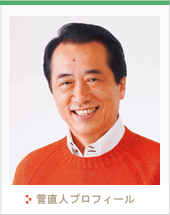







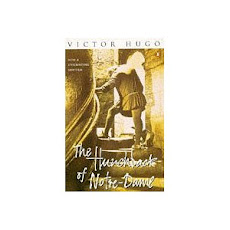





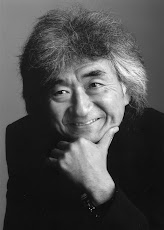



















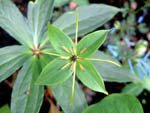
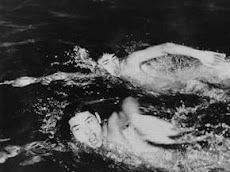






















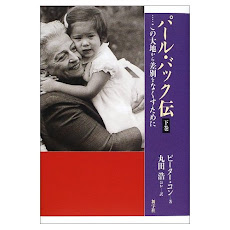



















.jpg)




